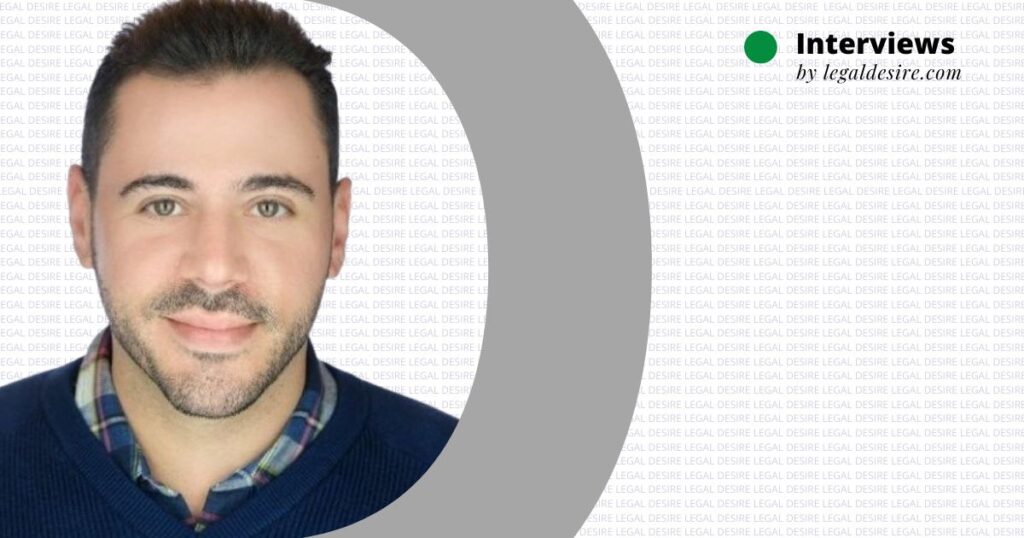Now Reading: In Conversation with Mr. Aby Joseph, M.Sc. (F.Sc.), MCSFS, Assistant Professor & Consultant Forensic DNA Expert
-
01
In Conversation with Mr. Aby Joseph, M.Sc. (F.Sc.), MCSFS, Assistant Professor & Consultant Forensic DNA Expert

In Conversation with Mr. Aby Joseph, M.Sc. (F.Sc.), MCSFS, Assistant Professor & Consultant Forensic DNA Expert
Mr. Joseph is working as an Assistant professor of the forensic science department of Amity University, Dubai. He is a professional forensic DNA expert and consultant with 25 years of practical experience working in forensic science and teaching. Before joining Amity University as a forensic science faculty, Joseph had worked for Abu Dhabi, Bahrain police, and the Ministry of Justice for almost twenty-three years. He is a licensed Molecular Biologist with the UAE Ministry of Health, Forensic auditor of Emirates National Accreditation Service (ENAS) with the UAE Ministry of Industry and Advanced Technology, Professional Member of the Chartered Society of Forensic Science, UK, Honorary Fellow of the European Society for Forensic Science, Scientific advisor to the Indian Criminology and Forensic Science Association (ICFSA) and an Ambassador for Wildlife Forensic Academy in South Africa.
During his professional career, he investigated and solved several high-profile murders, sexual assaults, disasters, and explosion cases. His specialities include disaster victim identification, post-blast Touch DNA analysis, and mixed DNA interpretation. He also has implementation experience in laboratory information management systems (LIMS) and accreditation of forensic science laboratories (ISO/IEC: 17025:2017) and crime scene investigations (17020:2012)
Joseph has a master’s degree in forensic science with DNA and currently working on a Ph.D. in forensic DNA. His research and development interests include sustainable forensic intelligence solutions and technologies for counterterrorism. He provides forensic training and consultation to equip lab scientists, police forces, justice officials, and university students with the technical skills and knowledge to produce rapid and reliable forensic results to avoid delay and justice miscarriages. He is a frequent speaker at international forensic science and law conferences, where he has given several speeches and conducted training sessions for a broad spectrum of audiences.
What inspired you to join the Forensic domain during those early days, when there wasn’t much awareness about Forensics? How was this step perceived by others?
My interest in forensic science began while I was in middle school (1980) when a tragic homicide case shocked my entire neighbourhood. Access to television was far too much of a luxury to even contemplate at that time, so I would normally wait till the morning newspaper to see if there were any new developments in the case. I learned about the importance of forensic evidence in criminal investigations for the first time in my life. At the crime scene, the police were able to collect vital forensic evidence, such as bloody shoe prints and short curly black hair. This evidence was crucial to the investigation and eventually led the police to the identification of an African suspect and his friends involved in the twin murder case. https://en.wikipedia.org/wiki/Karikkan_villa_murder.
Yet another remarkable case that boggled me was when I was completing my high school (1984) was a staged homicide case portrayed as an accidental fire death. This planned execution would not have come to light if the forensic team hadn’t discovered suspicious clues. The forensic science department of Kerala used skull superimposition techniques for the first time in the country to identify the skull of an unidentified victim in this arson death case (https://en.wikipedia.org/wiki/Sukumara_Kurup) both the cases were within a 9-kilometer radius of my home. This is when I realized that we’re going to have criminals and cases around us, and it’s not going to be easy to catch and convict them without the right evidence and forensics was one of the solutions. Both cases triggered my passion for forensics and decided to opt for forensic science as my career. I pursued a master’s degree in forensic science after my graduation in biological science. At the time, only two universities offered a Master’s program in forensic science with very limited seats, and to acquire an admission was difficult.
I was fortunate to be the only candidate from my state to be accepted into Madras University’s Forensic Science Master’s program in Tamil Nadu Government Forensic Science Department. It wouldn’t be quite true to say that my relatives were wholly supportive of my decision to pursue a subject that wasn’t widely known or traditionally pursued at that time. It wasn’t easy to stake my entire future on something that few people around me believed or accepted. But now that I think about it, I’m pleased, that I followed my passion with the support of my dad.
You have worked as a field scientist, as a Forensic consultant, and now you are teaching Forensic Science to students. How were these roles different from each other? What were the challenges that you faced in each role?
Each role has its own challenges, without challenges, life becomes stagnant, and no thrill in life. My two decades of experience in different roles in four to five forensic science departments in Bahrain and the UAE helped me to transform to new roles in any disciplines of the forensic domain. I started my career as a lab technician and progressed as a forensic scientist, expert, and consultant. Those different roles helped me to network with different stakeholders of the criminal justice system, allowed me to explore many forensic branches, and got opportunities to benchmark different crimes, investigation strategies, forensic capabilities, tools and services across the world. Subject matter expertise is the core fuel of all those transformations.. Actually added more value in my teaching, particularly in designing the academic forensic standards and developing the necessary skills and awareness required for employment in the forensic discipline. As a forensic science consultant, it’s all about knowledge sharing which helped me to identify the needs of the customer in an industry, or students in academics and provide the right solutions for their actual problems.
You have experience in setting up Forensic Biology/DNA laboratory as well as mobile Forensic Science laboratory. What challenges were encounter by you in doing so?
Yes, I established two state of the art, high-tech DNA facilities in compliance with international forensic standards under two different administrations. Each laboratory had its own unique needs and requirements because of regional services and client bases because many of the principles, processes, tools, resources, and considerations varied with the crime type, volume, location, and time period of the project. I utilized advanced forensic science technologies which focus on economical and sustainability standards in designing any type of forensic facilities. I always tried to refer to and incorporate updated statutory compliance, forensic policies, processes, and tools to forensic facilities in relevance to the anticipated benefits of each mission of the parent organization. For me, the prime objective of designing and setting up a forensic or mobile lab facility must ensure that the end-users in a criminal justice system receive an efficient, fast, reliable, and high-quality forensic service.
How different is it to work in an academic setting to that of the lab setting?
Well, both have different working environments and procedures. There wasn’t a specific time period for the forensic lab work, the work starts from the crime scene investigation up until the final submission of forensic lab analysis report and sometimes ends in court testimony. I was always on-call, and sometimes I would have to go for cases ranging from robbery, sexual assaults, post blast, homicide cases in same day or night. Evidence management was a bit challenging due to the different circumstances and environmental conditions of the cases, particularly processing the crime scene in night, but ensured the quality in evidence integrity and chain of custody from crime scene lab analysis operations. In a forensic science academic setting, whilst teaching any of the courses, I used to connect with a case example from my real life experience. This aided me in developing projects, crime scene simulations and case-study based forensic science pedagogy for bridging the gap between theory and practice. I believe that supplementing education with real-world experiences in forensic science gives a comprehensive educational insight for students. Altogether, both have their own different auras, When one calls for practical critical thinking, the other calls for knowledge and research.
You have conducted workshops, demonstrations and trainings for the DNA staff, police officials as well as students. How was training police officials and the DNA staff members different from teaching Forensic students and what were the challenges that you encountered?
Well, it depends upon the scientific knowledge and background of trainees and students, for police officials, it’s more of an awareness training. I design courses and workshops that provide a basic understanding of the importance of crime scene integrity and how to be able to maintain the field to avoid contamination issues of evidence. I run sessions that highlight the importance documentation plays in crime scene investigations and define the various types of digitized documentation utilized. For DNA staff members, I would always stress on the importance of implementing good laboratory practices and anti-contamination guidelines to maintain quality and integrity of the evidence. However, for forensic students, it’s about the quality of knowledge and critical thinking that would be more emphasized. It designs a strong foundation for the students, a base they can utilize and thrive on years from now. There aren’t many challenges in teaching students, I completely adore sharing my subject matter expertise and to add more value to the learning outcomes of the students.
Undertaking any research projects or guiding UG and PG students for their dissertation/project work in the Forensic Biology and DNA analysis domain is a challenging task. How do you deal with it?
Obtaining ethical and biosafety clearance (due to public attitudes and concerns about or fear of the detrimental implications to human health during Covid-19) is one of the forensic biology/DNA educational research challenges. To meet this problem, students utilize the multidisciplinary scope of forensic science and collaborate with our law, nanotechnology, management, and engineering departments of my university to conduct multidisciplinary research projects. Information technology is one of the best choices. Bioinformatics has changed our ability to access and use data from a variety of sources, including databases of sequenced genomes, genes, proteins, protein structures, and expression patterns, making it one of the finest possibilities. My long-standing healthy relationship with forensic industry partners in the Gulf countries also helped the students associate with them in collaborative forensic research projects and avoid such kinds of challenges.
It has been observed that these a lacuna between theoretical & practical understanding while teaching in the Forensics Domain. In your opinion, what is the correct way for the Capacity building of professionals teaching in this domain?
Academic and practical forensic experiences are two separate arenas with different levels of operation. Both have distinct goals and concepts. The rapid pace of change in the methods of new forms of crime is requiring these two industries to collaborate in research and development to develop new crime-fighting tools to counter the new forms of crimes and terrorism. By continuously observing the changing nature of technology-assisted crime and criminal investigation, I realized the fact that it’s become critical to figure out how the academic curriculum can effectively satisfy the forensic industry’s diverse needs and demands.
In general forensic academia, there has been a great deal of reliance on classroom methodology and a theory-heavy approach. However, there is a need to make the entire approach more practical. Existing pedagogies in general forensic academia can also be examined to determine whether they can be enhanced and made more practical. The forensic curriculum should be designed on a regular basis and enhanced in accordance with technological needs to address future forensic investigation challenges. Case studies and regularly inviting guest speakers from various forensic and criminal justice disciplines and allowing students to interact with them can prove to be extremely beneficial for students. Amity University’s academic policies always emphasize and encourage skilled-based education and the goal is to developing students to be competent for the changing forensic industry. This has made it easy for me to bring more practical projects and case studies into my teaching. I am confident that this approach will benefit everyone. Graduating students will have an easier transition into industry employment, employers will be able to hire people who are skilled and ready for work, and academic institutes like us will take great delight in seeing our students placed with international firms.
As a Forensic Biologist and DNA researcher, how do you see the future and scope of Forensic Biology and DNA analysis in UAE and other parts of the world? In your opinion, which recent development in Forensic Biology and DNA analysis can be regarded as a step towards the future?
Over the previous two decades, forensic DNA analysis has progressed dramatically and become more sensitive. Even in small offences, forensic DNA STR analysis has become a routine procedure in the UAE. According to my experience with UAE, forensic labs are very meticulous about their quality assurance and quality control issues in any of their forensic science services. They are very particular in maintaining the quality of forensic science services. Forensic crime and database DNA laboratories of UAE are not only accredited with ISO/IEC17025:2017 but crime scene investigation departments are also accredited with ISO/IEC 17020:2012, Both the departments are subjected to regular quality assessments to ensure the integrity of the evidence from crime scenes to ensure justice. Another important advantage of UAE labs is their rapidity in evidence analysis, for that they have stringent timeliness for evidence analysis, which is supported by integrated laboratory information management systems (LIMS) with robotic workstations in high-tech state of the art forensic facilities. Such support systems and automated processing has also reduced manual errors in sample handling and enhanced the pace of evidence processing.
As forensic DNA analysis technology advances, law enforcement organizations in a few countries are already utilizing Rapid DNA technology, next-generation technology (NGS), and current forensic DNA technologies to generate more human genomic information such as SNP, mtDNA, ancestry, phenotype, and address a wider range of questions in human identification in few unsolved cases. All those new technologies are beneficial no doubt about it, but before using any new forensic technology as a standard operating procedure, UAE forensic labs conduct thorough validation and feasibility assessments. However, few developing countries are interested in utilizing the potential capabilities of Rapid DNA and NGS technologies in their routine forensic DNA human identification testing. My recommendation for those countries is that the scientific validity and legal compliance of such technologies be thoroughly tested before being implemented in routine caseworks.
You have experience as a scientist, as a technical expert and auditor in the Forensic domain. How important is the quality management in Forensics and what are your views regarding the current scenario?
There are many qualities assurance and control issues being reported in many forensic science laboratories across the world. There are two major critical errors in forensic DNA analysis. One is the event where the DNA profile of the reference sample from a suspect is incorrectly concluded to match with the crime sample. The second type of error is the event of wrongly reporting a non-DNA match between two samples when in truth there is one. I do agree that every human activity is associated with some risk of error. Forensic DNA analysis is not an exception, there are potential sources of error at every stage in the processing of any forensic evidence, from the collection in the crime scene through laboratory analysis to interpretation of the results of the analysis. There is no single solution to the problem of error. The occurrence of errors can be minimized by scrupulous care in evidence collecting, sample handling, storage, laboratory analysis, results interpretation, and case reviews. It is important that forensic laboratories must use strict quality control standards to minimize the risk of error. Detailed guidelines for QC and QA, which are updated regularly, in accordance with the quality management system and relevant accreditation can minimize the errors.
Having worked for more than 2 decades in the Forensic domain, how do you wish to contribute to this domain?
DNA profiling and databasing is the most powerful technological tool for investigating crimes and determining guilt or innocence at trial, but the validity and dependability has been called into question across the world due to the increased sensitivity and background DNA interferences. It’s vital that the relevance of such technologies must be ensured before applying them in the criminal justice system.
My current research focuses on creating a fast and scientifically sound crime scene to court SMART forensic integrated framework in compliance with ISO/IEC: 17025:2017 and 17020:2012 guidelines to mitigate or avoid technical errors to avoid miscarriages in justice. As you are aware of the fact that, “Justice delayed, Justice delayed” To avoid any delay and errors from forensic services, many stakeholders of the criminal justice system are in the stage of forensic transformation to new technologies like paperless crime scene investigations & evidence management solutions, I used to support them with technology assessments and provide solutions to address their technical concerns and customization issues. The advancement of forensic capabilities and the establishment of a national DNA database are the need of the time for many countries including India. I believe that forensic science has a humanitarian role to play in convicting criminals and identifying disaster victims. So, I continue to do my research and technical consultations for transforming forensic science to future crime detection and missing person identification through forensic education and training services and beyond.










